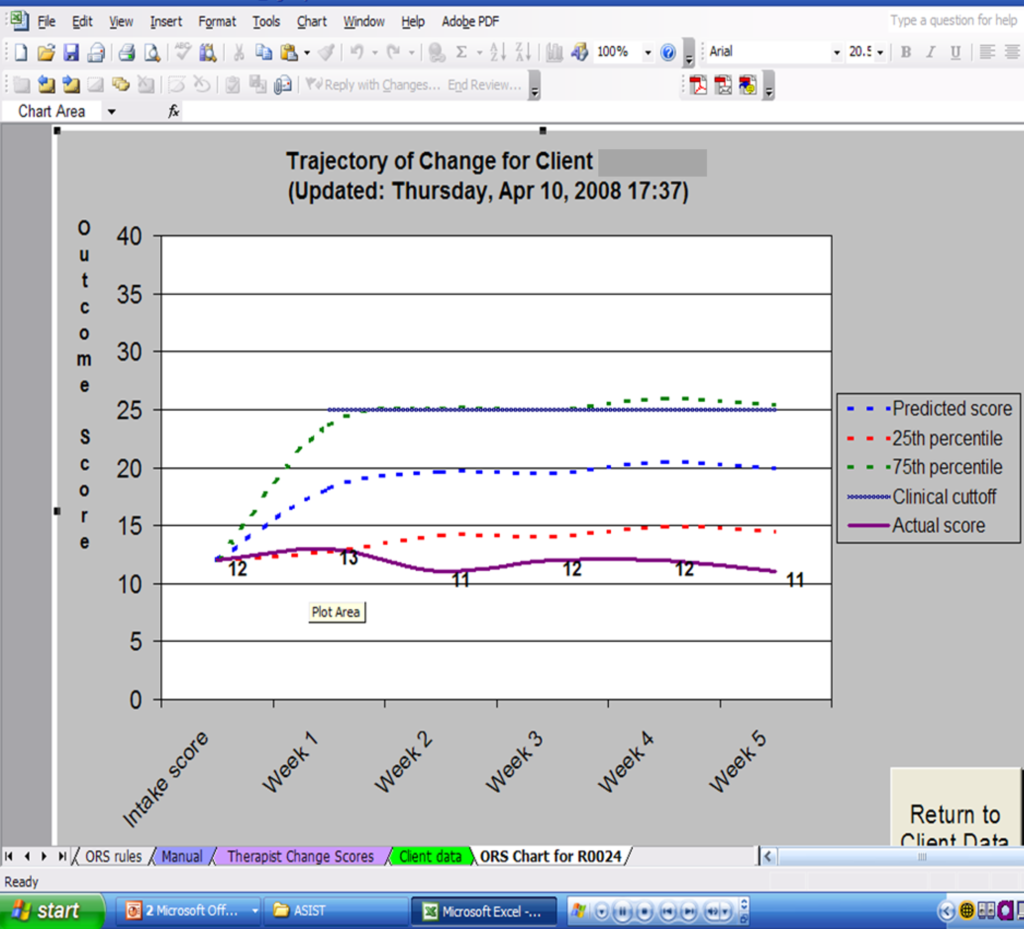At first, we simply hand scored the measures.
Next came an Excel® spreadsheet. It not only automated administration and scoring, but plotted progress from session to session on a graph. Purple represented the client’s actual score. The blue, green, and red lines showed the 50th, 75th and 25 percentile, respectively, for clients with the same start score in the entire normative sample.

Its hard to recall just how revolutionary such technology was at the time. No more paper forms, a single program for keeping track of all clients, the ability to calculate one’s overall effectiveness and, most importantly, a way for determining when an individual client was “at risk” for a negative or null outcome from treatment.
Over time, both science and technology have evolved considerably. Now, three powerful, web-based systems are available that enable clinicians, agencies, and healthcare systems to track client progress in real time, administer the scales both in person and remotely, and provide an array of sophisticated clinician, program and agency metrics.
Of course, the systems still make it possible to identify “at risk” clients. They do so, however, in a far more accurate way. No more guesswork or comparison of individual clients to percentile rankings or sample averages. As explained in this week’s “FIT TIP,” the “signal light” colors on the graphs are predictive, telling you when your specific client is on or off track toward to positive result.
“How?” you might ask.
Well, listen for yourself. True of all FIT TIPS, this one is just a few minutes in length.
